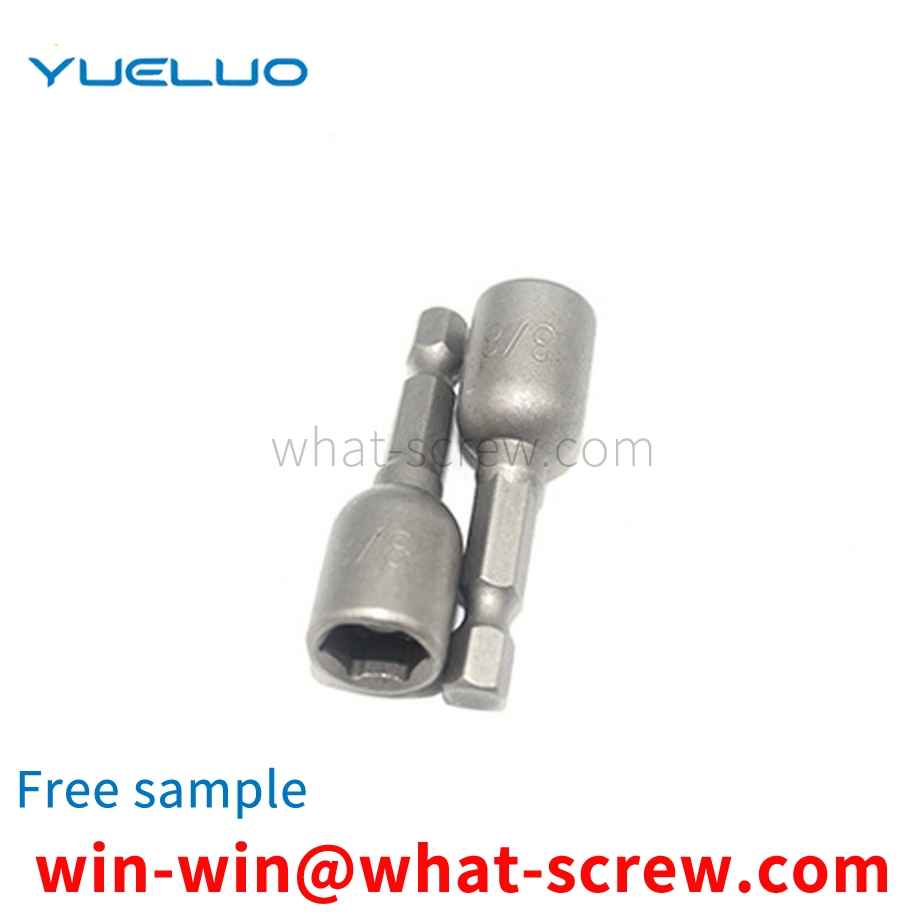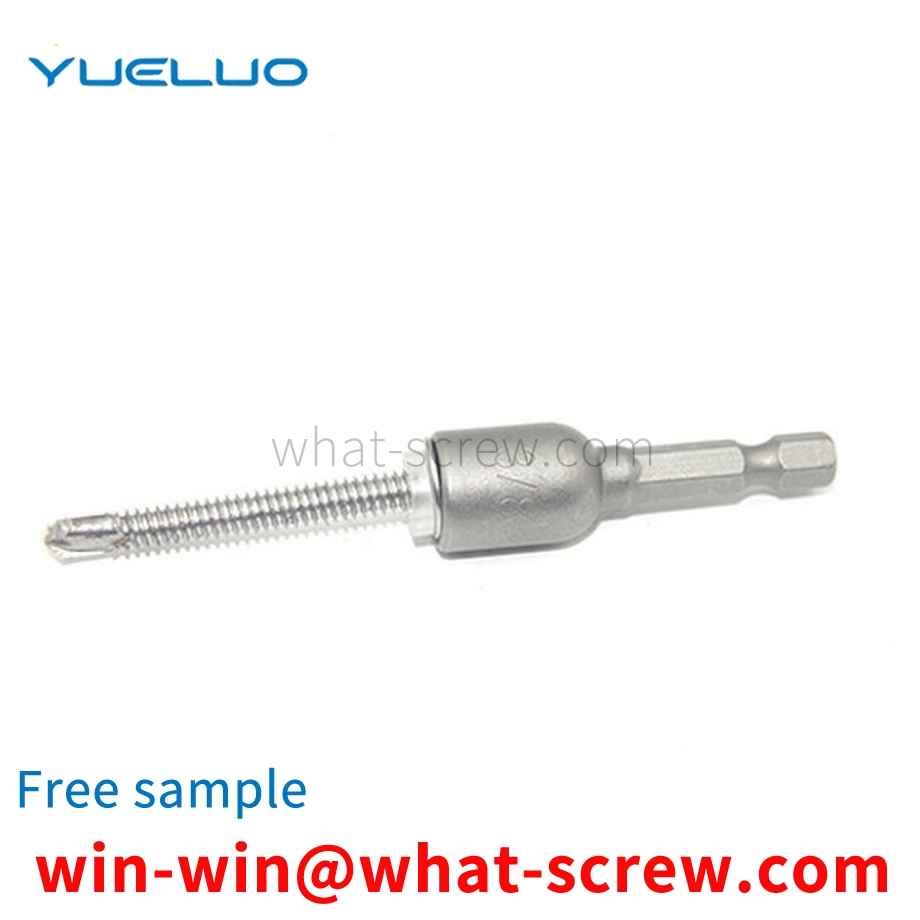The material of the second combination screw: It is decided to use the test machine to test the material of the combination screw wire, which is divided into iron and stainless steel. Iron wire is divided into 1010 wire and 1018 wire, 10B21 wire, etc., stainless steel is divided into stainless steel 201, stainless steel 304, stainless steel 316 and so on. The provisions of the national label of three combination screws: Generally, those who have experience in combination screws can be separated by using the inner eye. The difference between hexagon heads. Use a caliper to measure out the three-combination screw specifications. How big is it, how long is it, how thick is the head of the combination screw, how thick is the flat washer, and what is the outer diameter of the flat washer. How many hours is the salt spray of the combination screw measured with a salt spray machine. Use the environmental test machine to test whether the three-combination screw is environmentally friendly. Still not environmentally friendly.
Two combination screws are also called two combination screws. As the name suggests, it consists of a screw with a spring washer or only a flat washer. After the thread rolling, the two components are combined together. Two combination screws are available in iron and stainless steel. For iron, there are screw materials such as screw wire 1010, 1018, 10B21, etc. The general iron pier needs to be electroplated, and electroplating is divided into environmental protection and ordinary. For example, there are environmentally friendly color zinc, environmentally friendly blue zinc, white zinc, color zinc, white nickel and other electroplating. Stainless steel two combination screws. The material is stainless steel 304.
1. For low strength (below 500 N/mm2 or below 60000 psi) bolts use general soft steel, generally use SAE 1008 or JIS SWRM 8 (or SWRCH 8). 2. Lower strength (600 N/mm2 or 74000 psi) ) bolts use general soft steel, but limited carbon content grade, generally use SAE 1010 - 1015 or JIS SWRM 10 - 15 (or SWRCH 10 - 15). .3. Higher strength ( 800 N/mm2 or 125000 psi ) bolts of medium carbon steel, low carbon boron steel plus quenching and tempering, generally use SAE 1035 - 1040 or SWRCH 35K - 40K. 4. High strength (900 N/mm2 or more or 150000 psi or more) bolts use medium carbon Alloy steel or low carbon boron steel, in terms of application, if the metric Class 10.9 uses low carbon boron steel, the imprint should be added under the series imprint to become 10.9, and the imprint of the inch 8.2 grade is also used with the general Grade 8 bolts The imprint is different for easy identification. High-strength bolts made of low carbon boron steel cannot be used in high temperature conditions. The design strength exceeds Class 12.9 or ASTM A574 ultra-high strength bolts are limited to medium carbon alloy steel plus quenching and tempering. The performance grades of bolts for steel structure connection are divided into more than 10 grades such as 3.6, 4.6, 4.8, 5.6, 6.8, 8.8, 9.8, 10.9, 12.9, etc. Among them, the bolts of grade 8.8 and above are made of low-carbon alloy steel or medium-carbon steel and are heat-treated (quenching, tempering), commonly known as high-strength bolts, the rest are commonly known as ordinary bolts. The bolt performance grade label consists of two parts of numbers, which represent the nominal tensile strength value and yield ratio of the bolt material respectively. For example, a bolt with a performance level of 4.6 means: 1. The nominal tensile strength of the bolt material is 400MPa; 2. The yield ratio of the bolt material is 0.6; 3. The nominal yield strength of the bolt material is 400×0.6=240Mpa . Performance level 10.9 high-strength bolts, after heat treatment, can achieve: 1. The nominal tensile strength of the bolt material is 1000MPa; 2. The yield ratio of the bolt material is 0.9; High-strength bolts, processing and manufacturing problems are compared Small, general fastener manufacturing companies can master the manufacturing process; but problems are prone to occur in material selection and heat treatment. Material selection is the primary link. Various alloying elements have a great influence on the properties of the material, and the material must be subjected to spectral composition analysis; secondly, the fracture problem and the choice of heat treatment process have a great influence and are very important. Dealers and traders must control the inspection and performance testing links; automotive fasteners have high requirements and must carefully control the quality.
In the current production process, the inner wall of the circlip is quantitatively and evenly lubricated, and then the rotating shaft is inserted into the circlip, so that the rotating axis can rotate in the circlip, thereby realizing the rotation function of the sun visor. However, since the circlip is tightly fitted with the rotating shaft, during the insertion process of the rotating shaft, the front end of the circlip can easily push the grease from the opening at one end of the circlip to the opening on the other end of the circlip, so that the rotating axis and the inner wall of the circlip are easily connected. There is little or no grease left between them, which can easily lead to a lack of lubrication between the shaft and the circlip, and dry friction between the shaft and the circlip, resulting in a series of problems such as abnormal noise, difficult operation, and poor durability.
nut is a connecting nut, a part that is screwed together with a bolt or connecting screw for fastening, and a component that must be used in all production and manufacturing machinery. There are many kinds of nuts, we commonly have standard, German standard, British standard, American standard, Japanese standard nuts. According to different materials, nuts are divided into carbon steel, high strength, stainless steel, plastic steel and other types. According to the product attributes, the corresponding standard numbers are divided into ordinary, non-standard, standard, new standard, American system, British system, and German standard. Different sizes, unequal threads are divided into different specifications. The general standard and German standard are represented by M, and the American system and the British system are represented by fractions or #. The specification nut is a part that tightly connects the mechanical equipment. Only through the inner thread, the same specification nut and screw can be connected together. The anti-loosening of the screw has always been the intersection of people's attention. The anti-loosening of the nut is of great significance to the current life, because it directly affects the service life of the machine. Therefore, it is also very important for people's life safety. Technicians can achieve the anti-feeding of the nut by changing the material of the nut and increasing the method of tightening the nut, but these methods cannot fundamentally solve the problem, and increase the tightening nut while taking up more space.
We have many years of experience in the production and sales of screws, nuts, flat washers, etc. The main products are: GB120, blackened high-strength washers, A-grade dome head screws, brass flat head pin bolts and other products, we can provide you with products suitable for you fastener solutions.



















 Service Hotline
Service Hotline




